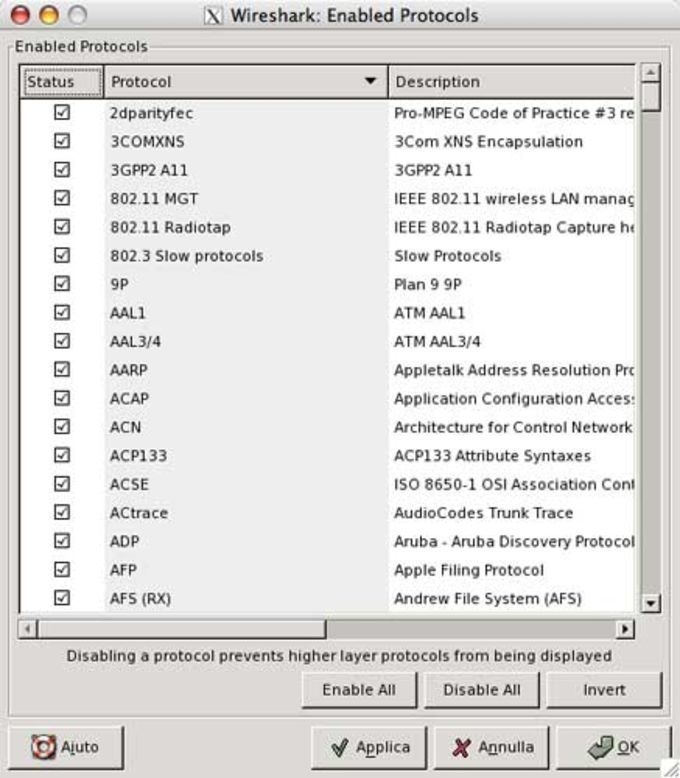
#Remove wireshark mac how to
How to benefit from Link-Local Multicast Name Resolutionīrowser (Computer Browser Service) - Computer Browser service is the mechanism that collects and distributes the list of workgroups and domains and the servers within themįor non-domain or unmanaged systems, follow this guide: Disable the Computer Browser Service

(Enabled = Don't use LLMNR)įor more information on Link Local Multicast Resolution please review the following link: Group Policy = Computer Configuration\Administrative Templates\Network\DNS Client\Turn off Multicast Name Resolution. Link Local Multicast Name Resolution (LLMNR)- Allows both IPv4 and IPv6 hosts to perform name resolution for hosts on the same local link.įor non-domain or unmanaged systems, create local Group Policy using GPEdit.msc with the following setting: What is mDNSResponder.exe / Bonjour and How Can I Uninstall or Remove It? (Hawk ID authentication required)įor non-domain or unmanaged systems information on how to disable mDNS traffic please review the following links: Click here for the mDNSResponder off package.
#Remove wireshark mac mac
Mac - Edit mDNSResponder service to stop multicast.
#Remove wireshark mac windows
Windows – The Bonjour Service is disabled in the GPO Multicast DNS (mDNS)- There is a mDNSResponder.exe process that belongs to the Bonjour Service in Windows, which is Apple’s “Zero Configuration Networking” application, typically installed automatically by iTunes, Skype and others. SSDP (Simple Service Discovery Protocol) - Used to discover Plug & Play devices, with uPnP (Universal Plug and Play) features.įor non-domain or unmanaged systems information on how to disable network discovery can referenced at the following link:ĭisabling Network Discovery/Network Resources However, depending on the network driver/ system other network components may be beneficial or essential for optimal network configurations File and Printer Sharing for Microsoft Networks.In many cases, the following components are required for operation on a standard TCP/IP based network: When it has been determined that disabling an item has no adverse effect on the server or workstation, the item can then be uninstalled. Disabling items allows you to determine which services, protocols and clients are actually required on a system. If you are unsure about the effects of uninstalling an item for the connection, then disable the item rather than uninstalling it. To disable an item, simply clear the checkbox associated with the item. To remove an unnecessary item, select it and click Uninstall.Right-click Local Area Connection (or the entry for your network connection), and then click Properties to display the properties dialog box for the network connection.Double-click Network Connections to display the network connections on the computer.Click Start, point to Settings, and then click Control Panel.To see the currently installed network clients, protocols and services, follow these steps: Unfortunately, this is the only enterprise way to control the setting. Dropbox will sense this port is blocked and disable LAN Sync. The GPO disables LAN Sync by blocking outgoing traffic on the port it uses. This link summarizes the LAN Sync features. The default configuration when Dropbox is installed or upgraded has LAN Sync enabled.

LAN Sync generates broadcast traffic from each client that, with the University's fast Internet connectivity, isn't beneficial. If Dropbox is installed, disable the LAN Sync setting. It can also be handled on a case-by-case basis. An enterprise fix is not in the GPO, but is provided for SCCM users.The GPO disables the problematic services in Windows.The GPO runs a startup script that sets a few NIC settings to take care of this.Client systems are broadcasting while asleep.Some of the things that are negatively impacting network performance that have been observed on the campus network are: Below are details of the different traffic that has been seen and what the GPO does to limit it. It is called _PUBLIC-Client Network Citizenship. We have created a single GPO that can be linked to help control this traffic. The goal of client network optimization and tuning is to find the sources of unwanted network traffic and to take steps to correct or eliminate the root causes in order to enhance network performance and help avoid future problems. Eliminating sources and causes of unwanted network traffic


 0 kommentar(er)
0 kommentar(er)
